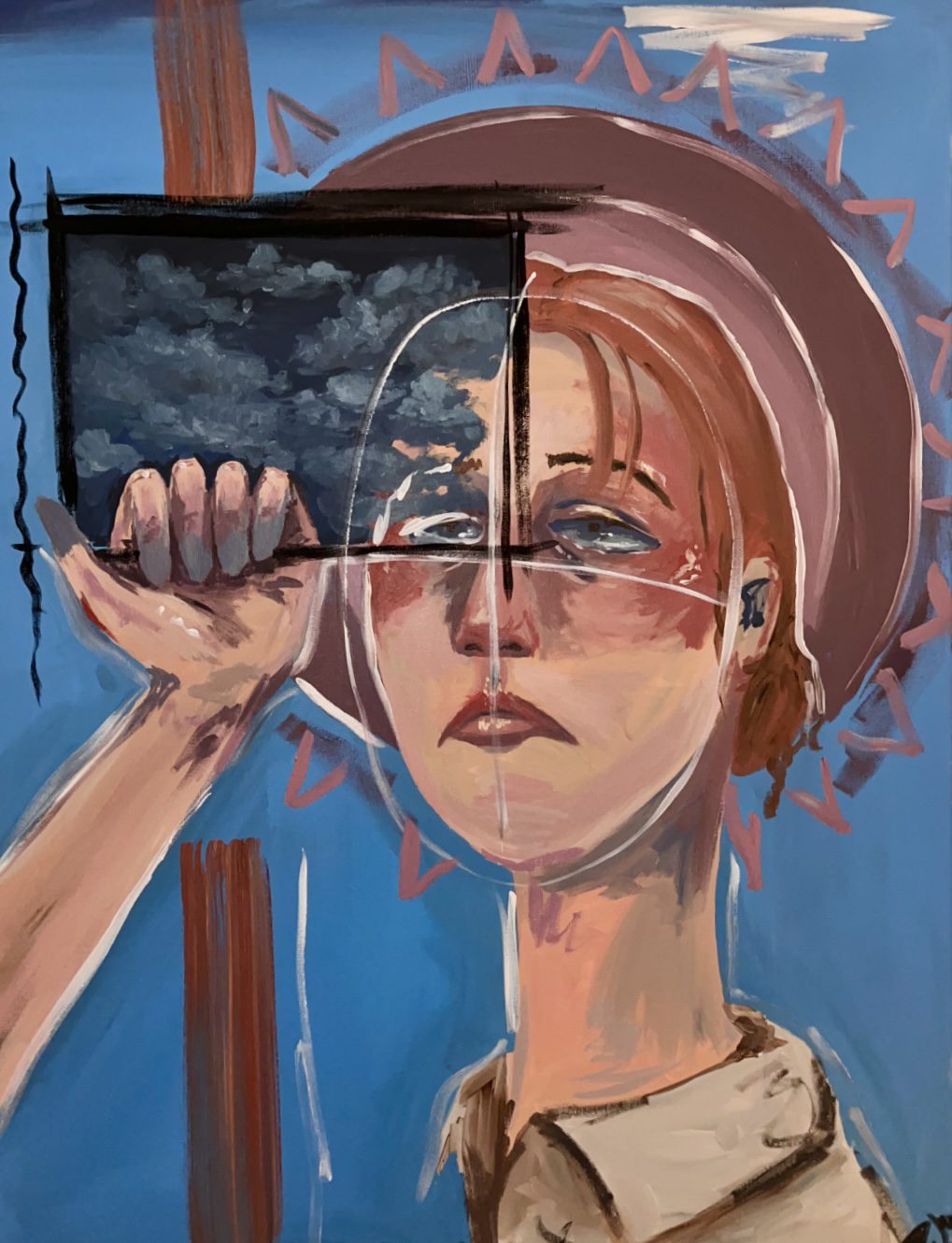While I do not specialize in hyper-realism, learning how to paint a portrait with acrylic paint still has some vital steps in order to complete a cohesive look.
I have done a fair amount of commissioned acrylic painting portraits in the past four years. I prefer to paint my portraits less hyper-realistic. I tried for a period of my artwork career to do hyperrealism, but found that my style resembled neoexpressionism more closely.
Tip #1: Mapping
Map out the dimensions of your face. I typically like to paint faces that cannot visualize, not faces in present reality. If I am in fact painting someone I know (like the picture above being a painting of myself) I like to keep it true to my own personal style while making some defining characteristics that clearly show that it is someone specific.
Once you have where the eyes, mouth, and nose are generally going to go, you can begin to focus on the next step.
Tip #2: Blocking
Block in your main shadows. It is much easier to block in the darkest sections of the face instead of the lightest. It helps you to visualize what direction you would like the light to be coming from, and helps you hone in on a color pallet for the skin that would be cohesive.
After this, you can advance on to the midtones or the main skin tones.
Tip #3: Mixing
Mix enough paint to cover the areas with midtones! Or, mix very small amounts of paint for small sections of midtones and use them individually.
A problem that I always run into with acrylic paints, especially with portraits, is how the color slightly darkens when it is dry. Then, if I dont have enough paint to cover an area that I wanted to, I can accidentally make the color slightly darker because I am comparing wet acrylic to dried acrylic.
Tip #4: Values
An important step that I often forget when I am painting a face is that I need to be using some of the skin tone for the neck and other areas that skin will be showing as well. I always tend to make the neck a little bit darker and more pigmented to show a bit of contrast and depth from the face itself.
Make sure that while you are covering the underpainted areas of the canvas, you are still remembering to add value. Since acrylic is so fast-drying, it is important to keep looking over previously painted areas and make sure they are drying how you would like them to.
It is also important to remember that with painting, nothing is ever a solid color such as black or white. Especially on faces, highlights and shadows are never a true white, or a true black.
Tip #5: Highlights
As I said above, nothing is ever a solid colored white with highlights. If you mix colors into the highlights, it will have a great affect. I personally like to use complimentary colors for my highlights. So for example, if my undertones are purple, I will use yellow highlights to give it a more ethereal look.


